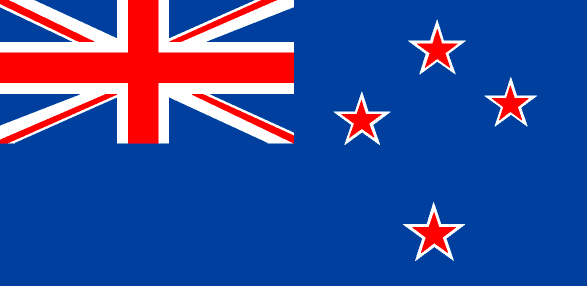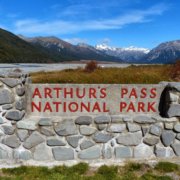Why is the NZ Government poisoning Kea?
The Department of Conservation (DoC) explains:
“High levels of seed production (‘mast’) in our beech forests is expected to trigger a rodent and stoat explosion later this year. When seed supplies run out these predators will turn on endangered birds…
“A widespread rodent and stoat plague in South Island beech forests would put some of our most threatened bird species such as yellowhead/mōhua and orange-fronted parakeet/kākāriki karanga at serious risk of extinction.” – DoC website, 2014
What do Science and History say?
Beech masting is natural, temporary, and its effects are not well understood or predictable.
“The density index for R. rattus increased…after the 1976 seedfall, but not after that of 1979.” – C. King, J. Anim. Ecology, 1983
“A prey switch to ground weta occurred as mice numbers declined, and not to birds, as is often expected or feared by conservation managers.” – D. Smith & I. Jamieson, DoC Science Internal Series, 2003
“Fluctuations in trap success suggest that stoats become very numerous in the summer and autumn following heavy seedfall, but remain at low abundance in the intervening times.” – N. Alterio et al. NZ J. Ecology, 1999
“increases in not only mouse, but also bird (and possibly invertebrate) densities may contribute to the high productivity of stoats in the year following a Nothofagus seedfall…
“When we compared stoat diet in the high-density year with that in the following two years, there were no significant differences in the frequencies of occurrence of birds or invertebrates in stoat guts…
“Stoats did not eat birds less frequently when mice were abundant, a result also found by King (1983)…
“Mouse and stoat numbers can rise after poor mast years…so assessing potential impacts on threatened species may require a better predictor than heavy beech seeding alone” – E. Murphy & J. Dowding, NZ J. Ecology, 1995
“It is likely that seedfall is only one of the factors regulating ship rat numbers in beech forest…
“ship rats were not an important food for stoats in the Hollyford and Eglinton Valleys even in years of relatively high rat abundance (King & Moller 1997).” – B. Studholme, Conservation Advisory Notes, 2000
“Nest predation did not increase in the breeding season following full beech mast-seeding in 1995, when stoat (Mustela erminea) numbers were beginning to rise” – G. Elliot & J. Kemp, WWF Final Report, 1999
“…satiation of predators and consequent reduced predation rates on birds is now thought to occasionally occur when mice reach extremely high densities (C.M. King, pers. comm.).” – D. Kelly et al., NZ J. Ecology 2005
Science and History show that:
1080 Poison is Dangerous
“A number of wild birds and some domestic animals were accidentally killed during the tests…1080 is too dangerous for general use” – S. Barnett & M. Spencer, Journal of Hygiene, 1949
1080 Poison is Persistent
“in dry or cold conditions it could take months to break down…
“the applicants…clarified that the breakdown of 1080 in the aquatic environment would be better described as dilution” – Environmental Risk Management Authority, 2007
1080 Poison is Ill-advised
“It is not advisable to expose nationally critical or endangered birds to aerial 1080 baiting, unless evidence from trials or other sources shows the birds do not consume non-toxic baits…
“we are unaware of any observational studies that have examined the impact of aerial 1080 application on rock wrens…
“Although the presence and protection of remnant mohua populations is often one of the drivers for aerial distribution of 1080 baits in South Island beech forests…the fate of individual mohua following such operations remains unknown.” – C. Veltman et al., NZ J. Ecology, 2014
“Kakariki (parakeet)…Dead chicks in a failed nest in the Hurunui Valley operation contained 1080 residues…two unmonitored Kakariki were found dead with 1080 residues in their tissues.” – TBFree New Zealand AEE, 2014
“The risk of toxin-related mortality is yet to be quantified at the population level for 11 native bird species that are known to have died” – T. Green et al., NZ J. Ecology, 2013
1080 Poison Causes Pest Plagues…..are these the real reason for Doc’s current “Battle for the Birds”?
“ship rat abundance indices increased nearly fivefold after possum control and remained high for up to 6 years…
“the typical outcome for most pulsed possum control is an uncontrolled ship rat population in the presence of a low-density possum population for most of the 3-7 year cycle.” – P. Sweeetapple & G. Nugent, NZ J. Ecology, 2007
“Intermittent control of possums and ship rats may have the nett effect of increasing ship rats for most of the time.” – J. Innes et al., NZ J Ecology 2010
The mouse index declined in the non-treatment area (30 to 14%), but increased in the treatment area (23 to 30%).” – DoC Rare BitsNewsletter, 2004
“mice are so far the Achilles heel of many programmes, with mouse numbers irrupting” – D. Armstrong et al., NZ J. Ecology 2010
“mice rapidly increased to be more abundant than they were prior to the control operation compared with sites not sown with 1080 baits. Now, 18 months after the initial 1080 operation, possum numbers remain low but rat numbers have increased to higher levels than prior to baiting and compared with sites that weren’t poisoned.” – G. Nugent et al., Kararehe Kino Vertebrate Pest Research, 2008
Because control operations utilising 1080 may induce bait shyness, are only temporarily effective, and often create favourable conditions for noxious animals by reducing competition, and releasing nesting sites and feeding area this Council belives that alternative means of dealing with problem animals should be investigated” – NZ Nature Conservation Council, 1977
1080 can increase predation on birds
“stoats are likely to have the greatest effect on birds after successful 1080 poison operations” – E. Murphy et al., NZ J. Ecology, 1998
“The reduction in rats, the main prey of stoats, may lead to an increase in stoat predations on birds…
…The abundance of introduced birds is more likely to form the bulk of stoat prey until rats become more plentiful again” – DoC Operational Report, Otira 2011
“A dramatic increase in fledgling mortality has been noted coinciding with a change to the pest control regime…eleven of fourteen fledglings have died. Nine of these were probably (some certainly) killed by stoats…The pest control regime was an aerial 1080 pollard operation in October.” – DoC Rare Bits Newsletter, 2002
“Four months after an effective possum and rat knock-down by a 20,000-ha aerial 1080 operation over Tongariro Forest, stoats reappeared in the centre of the forest and began killing kiwi chicks. So far five of the 11 chicks have been predated, and all in the centre of the treatment area” – DoC Rare Bits Newsletter, 2002
“The interaction between pest species is poorly understood. For example, rodent numbers sometimes increase following possum control operations, which may lead to an increase in stoat populations and a consequent decrease (through predation) of some bird populations… – G. Nugent et al., Kararehe Kino Vertebrate Pest Research, 2008
1080 is being applied again and again in Kea habitat
“Prior to each of the four occasions (2006, 2008, 2009, and 2012) that resource consent needed to be exercised, proposed operations were publicly notified” – DoC Operational Report, Arthurs Pass 2013
“We must effectively control the pests that threaten our forests, but 1080 poison should be a measure of last resort.” – NZ Green Party website, 2014
Killing stoats and possums will not help kea
“Kea nests appear to be relatively immune to predation from introduced mammals…Our results agree with a previous study of kea nesting at Arthur’s Pass, where no evidence of significant nest predation was found (Jackson 1963).” – G. Elliot & J. Kemp, WWF Final Report, 1999
“During the last hundred years Keas have shared their environment with rats Rattus spp. and stoats Mustela erminea. I have found no evidence of these animals affecting Keas…
“Twice I have found a dead possum Trichosaurus vulpecula within five yards of a Kea nest. The opossum frequently chooses holes similar to a kea nest as a den and perhaps these two opossums prospected the Kea nests.” – J. Jackson, Notornis 16, 1969
We found 44 nests in 25 sites and were able to assess the nesting success of 40 of them…The only nest failure we can confidently attribute to a specific predator was caused by a stoat”
G. Elliot & J. Kemp, Department of Conservation Internal Science Series, 2004
(N.b. monitoring nests is likely to attract predators)
IF it was advisable for humans to interfere during a mast year, this could be done WITHOUT aerial 1080 poisoning:
“Several studies on other forest birds have found that trapping can reduce the high predation pressure during stoat irruptions…a very intensive trapping programme significantly reduced stoat predation on breeding mohua during a stoat irruption.” – D. Kelly et al., NZ J. Ecology 2005
“Mustelid tracking rates were again below 5%…highlighting the ability of the form of trapping programme being used to maintain pressure on an invasive predator population” – G. Harper et al., DoC RNRP Annual Report, 2013
“Surprisingly, the trapping outperformed the poisoning method, reducing rat tracking indices much faster and keeping them at very low levels for longer than the poisoning method.” – DoC Rare Bits Newsletter, 2002
Please help save the kea and other precious native creatures from 1080 poison.
“What a poor, curtailed, mutilated sterile world we threaten our descendants with! Man and the rat sharing it – fit mates in many ways – in their desperate, deplorable, gnawing energy, in their ruthless destruction of every obstacle.” – Guthrie-Smith 1936
Cited in D. Towns et al, Biological Invasions, 2006










